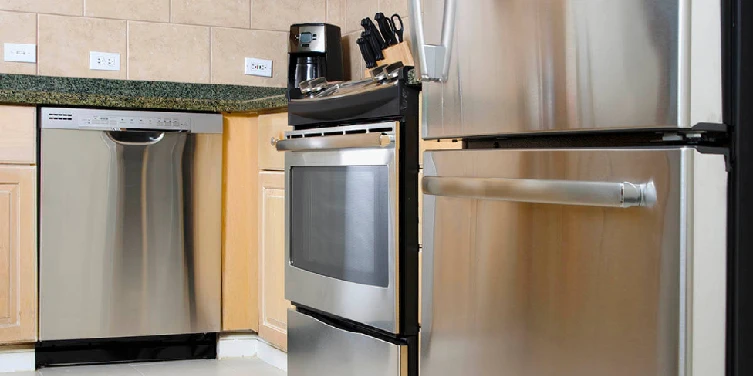Does Stainless Steel Rust? (Stainless Isn’t Always Rust-less)

Stainless steel is used in any number of applications including medical equipment, automotive parts, and indoor and outdoor appliances. There are several misconceptions about this versatile material—the biggest one being that it doesn't rust when exposed to water or the elements. While stainless steel may not corrode in the same manner or at the same speed as ordinary steel it can happen under the right conditions, but there are some steps you can take to reduce or eliminate the risk. Read on to learn all you need to know about stainless steel from the experts at Mr. Appliance®, including valuable tips to keep your appliances looking their best.
What is Stainless Steel?
Traditional steel is made from a combination of iron and carbon, giving it the impressive strength that is needed for heavy-duty engineering and construction. Stainless steel is a type of steel that has the unique ability to resist most stains and corrosion thanks to the addition of between 10 to 30 percent chromium. This invisible layer of chromium helps to protect the material from exposure to heat, moisture, and chemicals, making it a superior finish for household appliances.
When normal steel is exposed to oxygen it reacts to form a ferric oxide, giving it the traditional rust colour. Because of its chemical structure, the ferric oxide may fall or be scraped off, revealing a fresh layer of steel although the cycle will likely continue. When stainless steel is exposed to oxygen however, the chromium molecules combine with it to form a thin layer of chromium oxide which prevents further oxidation. As long as there are sufficient volumes of chromium and oxygen, if minor damage or exposure should occur a new layer will form over top to effectively heal itself.
Why Does Stainless Steel Rust?
Despite the winning properties that make stainless steel one of the most long-lasting, durable materials, rust may still form if the chromium layer is broken down by water, mechanical abrasions, or chloride. The most common types of corrosion can be categorized in one of three ways:
Crevice Corrosion
Small pits may form in the stainless steel from exposure to water, salt, food, or other materials which are high in chloride. If these crevices are too small for oxygen to access, the chromium will be unable to regenerate and rust may form.
Galvanized Corrosion
This type of corrosion may happen when two dissimilar metals come into contact with each other and sufficient amounts of moisture are present. One example would be a bolt or other type of connector that is used to attach stainless steel components together or hold them in place.
General Corrosion
General corrosion may occur when the stainless steel surface comes into contact with an acid based material, such as those found in many common household cleaners.
Tips to Prevent Your Stainless Steel Appliances from Rusting
Check the owner's manual for your stainless steel appliances and adhere to the care instructions to maintain their integrity and appearance. General rust prevention tips include:
- Clean your appliances using a mild soap or a cleaner formulated for safe use on stainless steel.
- Wipe with a clean, soft cloth in the direction of the grain.
- Check the ingredient labels on cleaners used in the vicinity of your appliances such as floor or grout cleaner.
- Never use steel wool or a scouring pad to clean which may scratch the surface.
For all your appliance repair needs contact Mr. Appliance online or call to schedule an appointment today!


